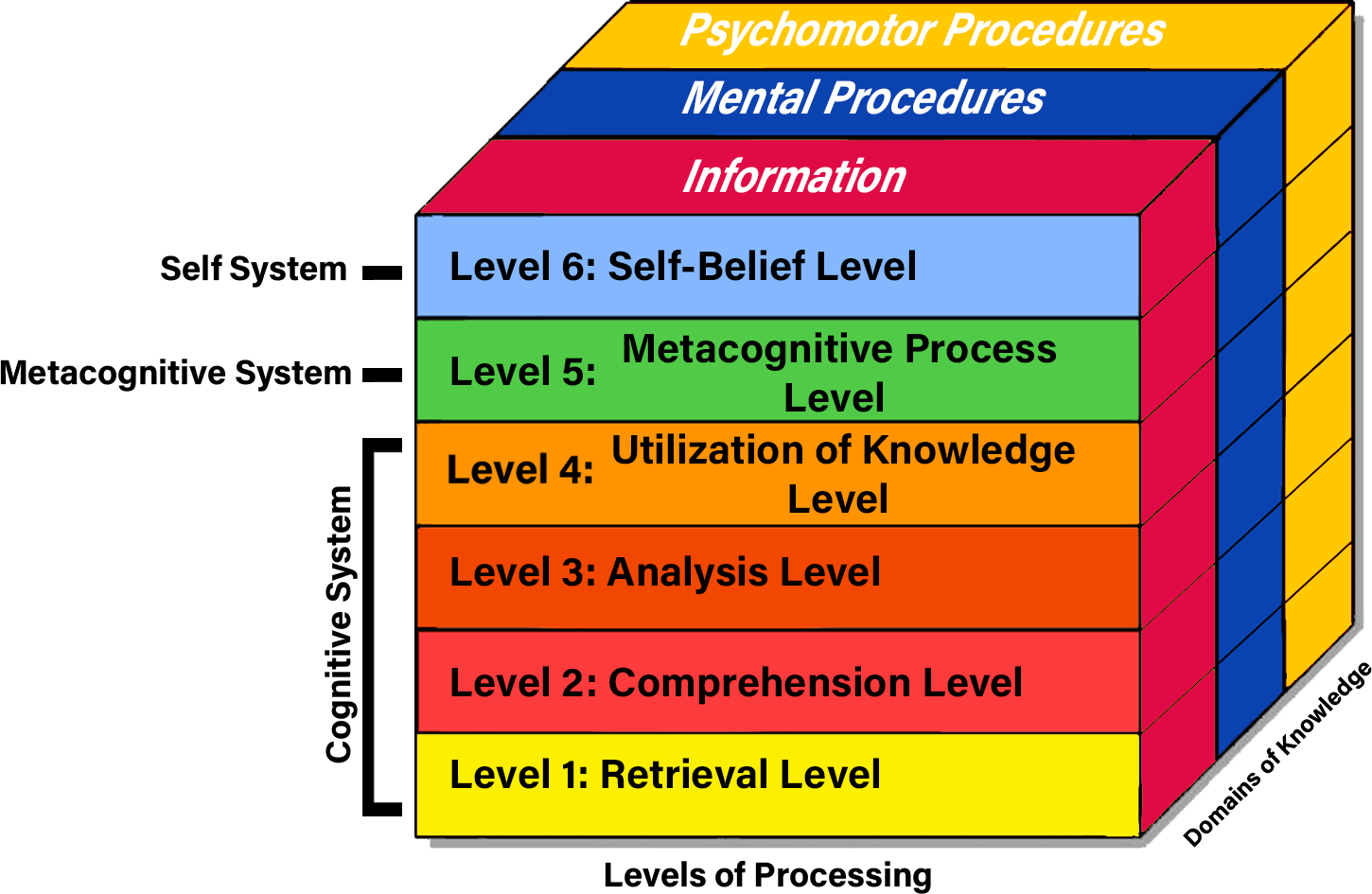It has finally happened… ATAR is here!
At the start of 2019, the Queensland Government introduced a new Queensland Certificate of Education (QCE) system. Previously known to many schools, parents, and students as “the OP system including QCS”, the new approach is called the “Australian Tertiary Admission Rank” (ATAR) system.
This new system is based on an educational model proposed by Robert Marzano. This Model is known as ‘The New Taxonomy’, which essentially allows teachers to enhance students’ thinking skills through six levels of processing.
Now, while this is a positive step in the right direction for education Queensland, it has unfortunately been subject to much controversy. Many parents are overwhelmed, fuelled by confusion and concern about the newly introduced educational system. This uncertainness has parent’s feeling apprehensive about the implications of ATAR on their children’s education.
However, do not fear… A Team Tuition is here!
At A Team Tuition, we pride ourselves in our ability to adapt to changing circumstances. Our Academic Personal Trainers (APTs) similarly impart this adaptability onto our students in light of imminent transitions between grades, teachers, and styles of learning.
Recognising these potential issues, we sought to become equipped with all the necessary information about the ATAR system! We want to provide you with the ingredients to succeed in school by leveraging the implementation of this new system to our advantage – our tutors are all always huge fans of being one step ahead!
With that being said… we have compiled a brief overview and summary of the six levels of the processing, regarding the ATAR system below for anyone else who is lost!

Contents:
- What the ATAR system
- The New Taxonomy by Robert Marzano
- Level 6: Self-Belief Level
- Level 5: Metacognitive Process Level
- Level 1: Retrieval Level
- Level 2: Comprehension Level
- Level 3: Analysis Level
- Level 4: Utilisation of Knowledge Level
- Benefits of ATAR
1. What is the ATAR system?
IATAR is a system in Secondary School that gives students’ a score to be compared to others and essentially get into University with.
The new ATAR system includes a total of 16 semesters of ATAR subjects and 4 semesters of a general subject. These subjects will each have 3 internal assessments that constitute 50% of the total grade for that specific subject. The remaining 50% will result from 1 external exam.
E.g. Assessments per subject:
3 x Internal Assessments = 50%
1 x External Assessment = 50%
Students generally receive practice assessments for both internal and external exams, the year before they conduct it officially.
As A Team Tuition recognises that assessments are slightly different with the ATAR system, we recommend students develop strong relationships with their teachers and continually ask for feedback to assist them in completing the task.
How are ATAR scores calculated?
ATARs are individual academic scores that are expressed on a 2000-point scale from 99.95 (highest) down to 0, in increments of 0.05.
The score is calculated by the formula:
ATAR = S1 + S2 + (10% x S3)
Key:
Subject1 = English
Subject2 = 3 other ATAR subjects
Subject3 = General subject
When your proficiency in English greatly enhances, you will be thankful that it counts for 50% of your score – after all, you speak the language every day in school. So, scoring flying colours in the subject should not be a problem with the guidance and support of your APT!
2. The New Taxonomy by Robert Marzano
Originally created by Robert Marzano, the ‘new taxonomy of education’ model provides teachers the methodology to enhance student’s thinking skills through 6 levels of processing:
- Level 6: Self-Belief Level
- Level 5: Metacognitive Process Level
- Level 1: Retrieval Level
- Level 2: Comprehension Level
- Level 3 Analysis Level
- Level 4: Utilisation of Knowledge Level
Now, if you OCD – this isn’t a pretty numbering system! You are probably asking… ‘why are they partially numbered backwards’? However, please bear with me.
Put simply, there are three systems at play… self system, metacognitive system, and cognitive system.
Level six is the self system – which is the starting point for each student. Next, level five is the metacognitive system. Then we have the cognitive system, which includes levels one to four. If you are more a visual learner, please feel free to refer to the diagram above, setting out each system!
This new model also forms the ‘Domains of Knowledge’, which includes: Psychomotor, Analytical Processes, and Information. This sounds confusing… however, it is essentially how we categorise knowledge into its different domains and therefore process it accordingly.
The term “psychomotor’’ refers to physical activity as governed or affected by mental processes (https://www.verywellmind.com/what-is-psychomotor-activity-380165), which are also known as the Analytical Processes. For example, a student demonstrates analytic skill by constructing a generalisation or principle about the nature of a certain topic based on specific events that have been addressed in class.
The next important domain is possessing the information necessary to understand what exactly the student is learning – without information, the psychomotor domain can hardly be carried out.
It is therefore evident that the levels of processing have significant interaction with the domains of knowledge – they essentially must co-exist.
3. Level 6: Self-Belief System
The starting point… is the self system… level six. Also referred to as the ‘self-belief’ level.
It ensures that students are motivated and interested in learning the content, as well as being at school. Without this, the other levels are hard to achieve.
While schools address this level through leadership programs and school culture, self-belief forms the very result of what we seek to achieve here at A Team Tuition.
APT’s are trained to encourage students’, develop self-belief, and provide mentorship. The A Team model has a large focus on mentoring in the program and this addresses self-belief on a 1-on-1 level.
Here, we are very much dedicated to mentor, guide and help our students through their schooling years, especially as all of our APTs have walked down that same path, thus obtaining first-hand experience and knowledge. This way, we ensure that all our students have the right support, strategies, and mindset to succeed by keeping them engaged both in school and at their own homes.
4. Level 5: Metacognitive Process Level
The next step is the metacognitive system, which refers to level 5.
The metacognitive process is essentially “thinking about thinking”!
The term originates from the root word meta, which translates to “beyond” or “on top of”. This level involves using techniques and strategies to address the content provided and, in turn, maximise students’ ability to process information.
However, Level 5 is largely “untapped” by schools, which leads to the possible association of them with the idea of unfamiliarity by students, parents, and even schools.
But fear not… A Team Tuition has a solution!
A Team Tuition has made the ‘Creating A Students’ (CAS) 2.0; a program that consistently creates A students by providing them with the right support, strategies, and mindset.
The terms ‘techniques and strategies’ that form the metacognitive process is KEY here – because they form a huge part of the CAS!
The nine modules created in the Creating ‘A’ Students Blueprint are designed specifically to help students develop study techniques that are individually effective for themselves, rather than being one that is standardised for all students.
Therefore, we strongly encourage students to utilise the CAS manual to their advantage to ensure all students have the means to succeed!
Now for the tricky bit… the cognitive system. As aforementioned this includes levels one to four.
5. Level 1: Retrieval Level
To start number one is the Retrieval level, also defined as the knowledge level.
“Knowledge, as defined here, includes those behaviours and test situations which emphasize the remembering, either by recognition or recall, of ideas, materials or phenomena”
This level includes the requirement of knowledge of specifics (terminology and facts).
Further, it also refers to the ways and means in dealing with those specifics (trends, sequences, criteria, and methodology).
It is based on the idea that such knowledge should be readily ‘recalled or retrievable’ especially during the end of year assessments.
6. Level 2: Comprehension Level
The second level concerns the intake of new information by students. This occurs through some form of communication that allows the student to grasp the meaning and intent of the material.
The three forms of comprehension are:
- Translation
- Interpretation
- Extrapolation.
Firstly, translation refers to circumstances where students summarise the respective information in their own words.
Secondly, interpretation refers to the act of explaining, reframing, or otherwise showing your own understanding of something. This requires a reorganisation of ideas into a new configuration in the mind.
Thirdly, extrapolation occurs when students make inferences and predictions based on literal information in the communication and principles and generalisation already possessed by the students.
7. Level 3: Analysis Level
The third level involves a detailed examination of the elements:
- Relationships among the elements
- Organisational principles that govern the elements.
This step is incredibly important and highly tested at school. Why? Because the quality of the analysis will consequently affect the comprehension of the new material.
8. Level 4: Utilisation of Knowledge Level
Next is level four! It’s time for the utilisation of knowledge!
It requires students to be able to correctly apply their newly learnt knowledge.
In other words, this level requires that students comprehend the material in order to proceed to the next level and achieve application.
Easy… right?
9. Benefits of ATAR
It is undeniable that the ATAR system better prepares students for University and the workforce, as it is based on an educational model that encompasses more depths than the old OP system.
It encourages independence, as well as a deeper level of cognitive function.
A Team Tuition has recognised the importance of this change and has developed a program that addresses each level of the new taxonomy model that ATAR is based on!
It provides our APTs the resources need to mentor our students and prepare them for not school examinations, but also a life-long career.
Given the support and resources, A Team Tuition can provide to help you leverage this system to your advantage, there is no need to hesitate on improving your academic future – seek out the most effective techniques and soar!
The post Everything You Need To Know About The New ATAR System appeared first on A Team Tuition.
from A Team Tuition http://bit.ly/2WieWum
via IFTTT







